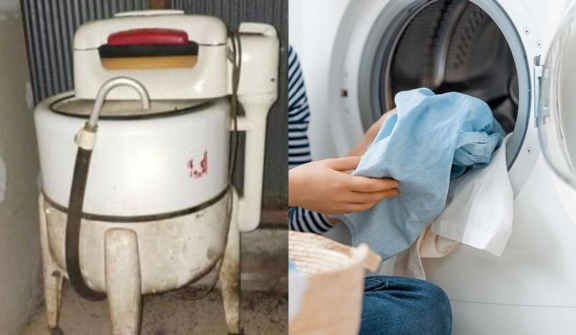
In today's world where we are aware of our impact on the environment, small changes in our daily habits can have a big impact.
One such change is revisiting the age-old practice of washing clothes by hand.
Take a moment to look at the charming picture before you. It is a historic site used by millions of people but largely unknown today.

In fact, we'd venture to say that most people don't know what it is.
What unravels is that this curious contraption is deeply rooted in the history of the laundry industry.
Laundry methods have evolved over thousands of years, from beating clothes with stones on river banks to the modern conveniences of electric washing machines that can get the job done in just an hour.

Considering the countless steps involved—getting water, boiling, washing, rinsing, wringing clothes, and drying—it's clear that laundry was once a labor-intensive household chore. However, for those who do not want to sacrifice their time and endure the physical burden of hand washing, alternatives such as hand washing have become a viable solution.
These handheld machines provide similar results to electric motors, but use significantly less water and do not rely on electricity.
The appeal of hand washing goes beyond the environmental benefits. Not only are they cost-effective, they are also cheaper than electric products. Imagine taking the chore out of laundry day with minimal effort and saving money in the process.

What makes these machines even more attractive is their portability and smaller size. They can be placed anywhere when not in use, providing users with flexibility and convenience. This practicality adds to their appeal, making them suitable for a variety of living arrangements.
By adopting eco-friendly alternatives, individuals can help reduce their overall carbon footprint.
As we enter the modern era, we seem to be witnessing the resurgence of an age-old habit - the return of the art of hand-washing, now driven by compact, portable machines.




